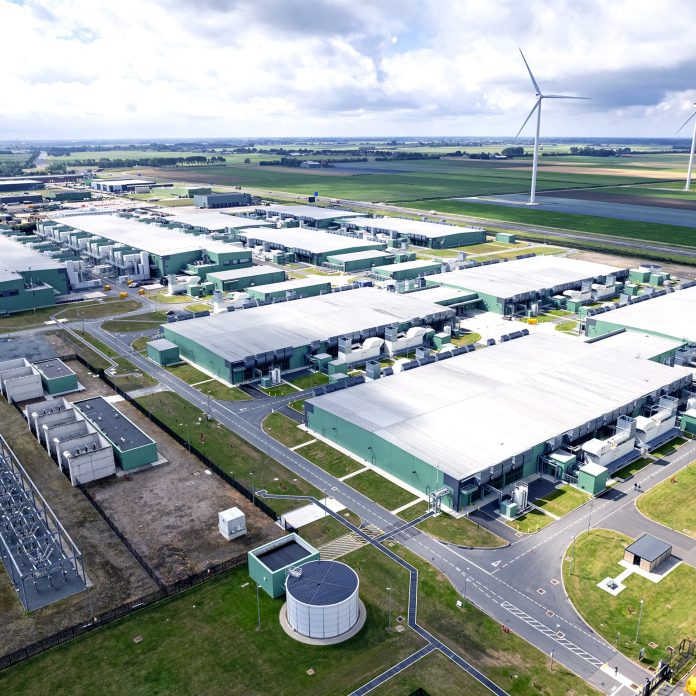The Global Race to Power AI: Challenges and Opportunities
Leaders worldwide are moving fast to deploy AI at scale, but scaling AI means more data centers—and data centers consume vast quantities of energy. On a recent episode of The McKinsey Podcast, McKinsey’s Jesse Noffsinger and Pankaj Sachdeva discuss the challenges and opportunities of building new, bigger data centers quickly to meet the growing demand for power.
In the world of AI, data centers are critical for housing and running the necessary technological equipment. However, as McKinsey Partner Jesse Noffsinger points out, the expansion of capacity comes with sustainability implications and the need for innovations in cooling and chip architecture. The AI economy is expected to create $4 trillion of value by 2030, driving the need for more data centers to meet the demand for computing power and data storage.
Currently, the global data center supply is about 70 gigawatts, but this is expected to increase to 220 gigawatts in the next five years. This growth is largely driven by AI, which is structurally and architecturally more compute-intensive. As a result, data centers are moving to locations where power is readily available, such as Wisconsin, Oklahoma, and Wyoming, to accommodate the increasing demand.
One of the major shifts in data center architecture is the move towards liquid cooling to address the heat produced by power-hungry data centers. Traditional cooling methods are no longer sufficient to cool these facilities, necessitating technological advancements in cooling systems.
As Pankaj Sachdeva explains, the shift from training to inferencing in AI will also impact data center requirements. Training AI models requires large data centers with high compute capacity, while inferencing will require a network of edge data centers. This shift presents both opportunities and challenges in the data center economy, emphasizing the need for addressing supply chain and technological challenges.
Meeting the escalating need for power poses challenges such as sustainability issues and limitations on reliable power sources. Infrastructure requirements for data centers are twofold, focusing on energy and the building and commissioning of the data centers themselves. Increasing rack densities and generating enough electricity to support the growth of data centers are key considerations in building the necessary grid infrastructure.
Even as the world’s consumption of data centers increases, the need for more data centers to support the AI economy is expected to be much higher. The race to power AI presents both challenges and opportunities for leaders worldwide as they navigate the evolving landscape of data center technology and sustainability.
The Future of Energy Infrastructure: Navigating Challenges and Seizing Opportunities
Introduction
As we look ahead to the next few years, the demand for power is set to drive significant growth in the energy sector, particularly in regions like the US where net load growth has been stagnant. This presents both challenges and opportunities for stakeholders in the industry.
Challenges in Designing Infrastructure at Scale
Building data centers, a crucial component of modern infrastructure, requires careful planning and execution. However, with construction timelines extending due to delays, the industry is facing significant challenges in meeting the growing demand for power.
According to industry experts, an estimated trillion dollars of capital needs to be invested in developing clean and high ROI projects to support the increasing demand for power. This includes transmission developers and power generation companies focusing on building projects in locations that can efficiently meet this demand.
Short-term solutions such as battery storage and modular assets like fuel cells and small turbines are being deployed to enhance the utilization of existing infrastructure. However, investing in large-scale projects such as gas plants, wind and solar farms, geothermal, carbon capture, and next-generation nuclear reactors is crucial for meeting long-term energy demands.
Investing Wisely in an Evolving Space
With dynamic technologies disrupting the AI market and innovations like DeepSeek enhancing efficiencies, it is essential for industry leaders to strategically invest in a rapidly evolving space. Enterprises must focus on addressing structural barriers to scaling AI within complex organizations and aligning their investments with customer needs.
Suppliers, developers, and LLM providers must adopt a customer-backed view in developing products and services, considering the demand drivers and end-users. Investors need to assess the durability of business models, adaptability to market shifts, and geopolitical risks to make informed investment decisions.
Collaboration and partnerships within the ecosystem are crucial for addressing the scale and complexity of challenges in the energy sector. Establishing strategic alliances and participating in the ecosystem will be key to driving innovation and sustainable growth.
Navigating the Integrated Energy System
It is vital to recognize that energy and power are interconnected on a synchronized grid, emphasizing the shared nature of these resources. The integration of AI and power systems requires a holistic approach, considering the broader impact on the energy transition.
Stakeholders must focus on developing durable business models that contribute to unlocking new developments in the data center and AI economy, while supporting the overall growth of the power sector. By aligning strategies with the integrated energy system lens, organizations can navigate challenges and drive impactful change over the next decade.
Conclusion
As the energy sector continues to evolve, strategic investments in infrastructure, technology, and partnerships will be critical for meeting the growing demand for power. By leveraging innovative solutions, collaborative ecosystems, and sustainable business models, stakeholders can pave the way for a resilient and efficient energy future.
Title: The Benefits of Mindfulness Meditation for Mental Health
In today’s fast-paced world, many people are looking for ways to improve their mental health and well-being. One practice that has gained popularity in recent years is mindfulness meditation. This ancient practice involves focusing on the present moment and cultivating a sense of awareness and acceptance.
There are numerous benefits to practicing mindfulness meditation, particularly when it comes to mental health. Research has shown that mindfulness meditation can help reduce symptoms of anxiety, depression, and stress. By focusing on the present moment and letting go of negative thoughts and emotions, individuals can experience a greater sense of calm and peace.
Additionally, mindfulness meditation has been shown to improve cognitive function and increase self-awareness. By practicing mindfulness, individuals can learn to better understand their thoughts and emotions, leading to greater emotional regulation and resilience.
One of the key benefits of mindfulness meditation is its ability to improve overall well-being. By reducing stress and anxiety, individuals can experience better sleep, improved relationships, and a greater sense of happiness and contentment.
To get started with mindfulness meditation, all you need is a quiet space and a few minutes each day. There are numerous resources available, including guided meditation apps and online videos, to help you get started on your mindfulness journey.
In conclusion, mindfulness meditation can be a powerful tool for improving mental health and overall well-being. By practicing mindfulness regularly, individuals can experience greater peace, clarity, and emotional resilience. So why not give it a try and see the benefits for yourself?


